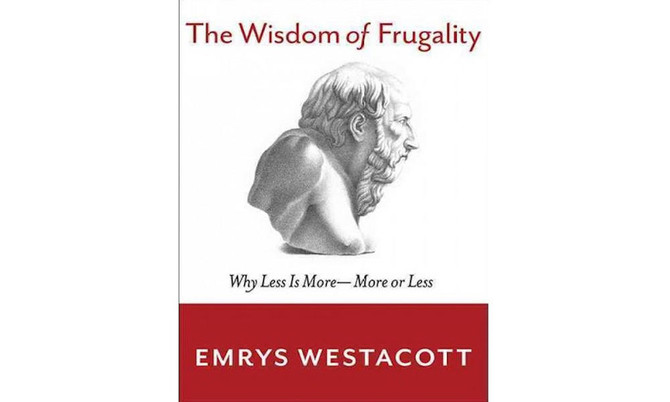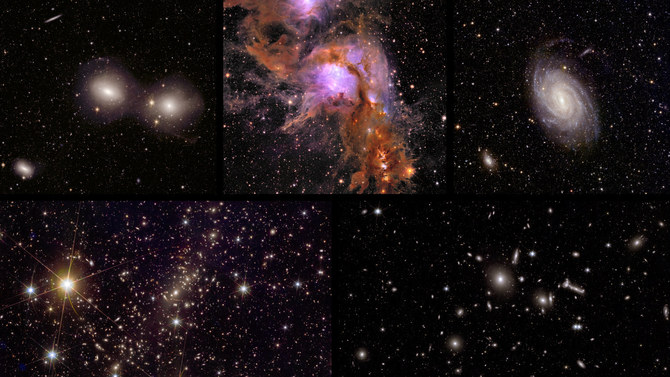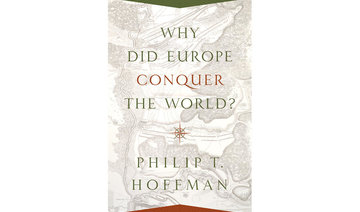Many people associate happiness with wealth. But is it wise to have a taste for luxury? Is it morally or economically sound to incur debt in order to buy things? And is it wrong to be a spendthrift?
Throughout history, thinkers have praised the art of simple living. Frugality was viewed in the past as a smart and dignified activity, which nurtures our ability to reason and become self disciplined.
In this book Emrys Westacott explores the pros and cons of living frugally. He tries to explain why, despite its benefits, many admit they prefer a taste of luxury to the harshness of frugality. Westacott also argues that in view of the environmental problems threatening our planet, it may be finally time to listen and follow those who believe in a simpler way of life.
But what does it mean to live frugally? The concept of thrift and frugality carry in fact many meanings. One of them is the idea of fiscal prudence mostly associated with Benjamin Franklin. A self-made man, at his death, he was celebrated as one of the greatest men of his time. An entrepreneur, politician, diplomat, scientist, inventor, philanthropist and a writer, Franklin mentioned in his autobiography the importance of cultivating 13 specific virtues. The fifth on his list refers to frugality: “Make no expense but to do good to others or yourself; i.e. waste nothing.” Franklin warns especially against the dangers of debt, which he says “exposes a man to confinement, and a species of slavery to his creditors.” Franklin also gave us another good piece of advice: “Beware of little expenses, a small leak can sink a ship.” Some people like Oscar Wilde believed the opposite: “The only thing that can console one for being poor is extravagance.” And indeed, Oscar Wilde lived as he preached, above his means. He died impoverished in a hotel in Paris.
Living cheaply brings to mind a lifestyle using few resources like that of Diogenes, a 4th century Greek philosopher who believed that material goods had little or no value especially when compared with simple pleasures. During his famous encounter with Alexander the Great, when the latter asked him what he could do for him, Diogenes replied: “Don’t block my sunlight!” Enjoying the sun is a pleasure.
What people considered necessary in ancient Greece has little in common with 21st century basic needs such as electricity, running water, central heating, air conditioning, a smartphone and an Internet connection. However, some communities like the Amish prefer not to use modern technology. The Amish work toward communal rather than individual well-being and self-sufficiency. They farm without tractors because they can rely on each other’s help. But then we can argue that in some ways, technology can help us become more self-sufficient like when we use a washing machine instead of having servants.
However, the desire for riches can reach a stage when one is never satisfied. One is so easily caught in a vicious circle of always wanting more. There are examples of very rich people who instead of becoming more generous become increasingly mean. This was the case of Hetty Green, known as the witch of Wall Street. At the time of her death in 1916, she was the richest woman in the world and yet such a miser. She insisted that only the dirty hems of her dresses should be washed to save soap.
Seneca, Diogenes and Benjamin Franklin would be disappointed if they lived in today’s consumer society. People are more than ever eager to make money and willing to live beyond their means.
According to the Pew Research Center, 64 percent of Americans aged between 18 and 24 said that becoming rich is their most important goal in life. A Gallup Poll in 2012 found that the same percentage of Americans wanted to become rich, which is the reason why in 2010 US lottery ticket sales totaled $58 billion.
However, “Wealth can also be less than the blessing it is expected to be when its distribution is highly unequal... among wealthy societies, those where income inequality is greater suffer more from a variety of social ills, including higher rates of physical illness, mental illness and violence, along with lower levels of education, social mobility and trust,” wrote Westacott. But in countries where economic and social inequalities are less pronounced like in Denmark and Costa Rica there are higher levels of happiness. Denmark’s high standard of living, decent health care, education for all and a fair distribution of wealth contribute to the happiness of the Danish people. But does wealth make you happy? A consensus has emerged among social scientists that people living in poverty tend to be significantly less happy than those living above the poverty line.
However, when a certain level of comfort and security is attained, more wealth will not enhance one’s feeling of happiness.
This satiation level is said to be around $75,000, which means that increasing the number and quality of pleasurable experiences does not make one happier. “It seems that our culture is still torn between accepting acquisitiveness as a necessary condition of economic growth and denouncing it as an undesirable character trait that bespeak false values and encourage unethical conduct” wrote Westacott.
This brings us to the pros and cons of extravagance, one of the most interesting chapters of the book. The concept of extravagance means going beyond what is wise. Although few people would defend the idea of living beyond one’s means, capitalism constantly encourages us to buy on credit and capitalism also persuades us that “to be an enthusiastic consumer is to be a good citizen: that consumerism is a form of patriotism.” This was the case after World War II when buying American-made goods was considered a patriotic action to rebuild the country.
Rudy Giuliani, the former mayor of New York City, reiterated the same idea after the 9/11 terrorist attacks in the US. He declared in a radio interview: “There is a way everybody can help us, New York and everybody all over the country. Come here and spend money, just spend a little money.” And even Newsweek made a similar appeal following the 2008 recession under the headline “Stop Saving Now!”
How do we feel about the way rich people behave? Do we approve of Paris Hilton, who had a house that was modeled on her own mansion built for her dog at a cost of $325,000, and the pop star Bono who while attending a fund-raising event in Italy had an urge to wear a particular hat. He had it flown from Ireland at a cost of $1,700.
Some rich people think that we might feel envious of such a behavior but on the other hand, this extravagance encourages others to act in the same way. The top salaries and bonuses given to the CEOs of the world’s biggest companies push other people lower down the ladder to demand a rise in their salaries. The extravagant lifestyle of rich people gives birth to a materialistic culture, which encourages a disparaging individualism as well as a desire for personal wealth. Yet one can also argue that extravagance is economically beneficial since one person’s extravagance is another person’s income.
Spending money on luxury goods creates jobs, which enables those employed to earn more and spend more and this in turn stimulates the economic activity. Most of the palaces, gardens and museums that tourists visit today were built thanks to the generosity of enlightened monarchs and well-intentioned philanthropists combined with the government’s efforts to spend great sums of money to maintain them.
Interestingly enough the food, clothes, computers, smartphones, cars and kitchen equipment, to name but a few, are not very much different to those owned by rich people. No one will be impressed by a new iPad. To arouse people’s interest, you need to mention that you had breakfast in Paris, lunch in New York and dinner in Rio de Janeiro!
According to psychologists, spending our money on holidays, concerts, and social gatherings makes us happier than buying material things. “We quickly adapt to having the new stuff, whereas good memories remain a continuing source of pleasure,” wrote Westacott.
Showing off one’s wealth is still viewed as an act of vulgarity, and people who live beyond their means are considered foolish, but rich people who spend their money on a worthwhile project can genuinely be considered virtuous.
Paradoxically, some of the same factors that have lessened the appeal of frugality are also responsible for sparking an interest in the ideals of a simple life.
Life nowadays is characterized by constant change and movement, which triggers complexity, instability and confusion. This creates a feeling of nostalgia for a time when life was simpler. Bob Dylan, incidentally, captured this sense of loss in “Dream,” a wonderful song where he looks back on the easy-going innocence of his teenage years “It was all that easy to tell wrong from right.” Dylan realizes that simple issues have now become so complex. The singer is ready to renounce material wealth and return to the simple life he had, but he knows that is a wishful dream.
This nostalgia for more peaceful times is also felt in China where the most popular art hanging in restaurants and sold to tourists represents pristine landscapes symbolizing peace, serenity and harmony.
This longing for another lifestyle is manifesting itself in Europe in the form of the Slow Movement, a desire to fight the fast pace of life.
Frugal simplicity is critical of consumerism and of the capitalistic values of Wall Street. Though many acknowledge the multiple benefits brought by economic growth, they also criticize the fact that these sources of enjoyment are not distributed equitably; they are not available to everybody.
However, provided that a person’s basic needs are satisfied, “many kinds of life may be fulfilling, including some far removed from the life of frugal simplicity. But that life still has much to recommend it for the values it expresses and the responsibilities it accepts. It remains one of the surest paths to contentment, and there are good reasons to associate it with wisdom,” concludes Westacott.
Westacott sheds light on the conflict between the virtues of a frugal life and the economic imperative for growth. Frugality is a smart and dignified activity, which should not be confused with poverty. Living frugally is essentially soul satisfying and it leads us to a more meaningful way of life.
Book Review: Making a case for living frugally
Book Review: Making a case for living frugally

Kodi, star of ‘Dog on Trial,’ takes home Cannes’ top dog prize

- The Griffon mix was praised for his “breathtaking” performance as Cosmos, a guide dog for a visually impaired man
- Xin, the greyhound who made a star turn in Chinese director Guan Hu’s “Black Dog,” was awarded the Palm Dog’s Grand Jury Prize
CANNES, France: There was lots of tail-wagging and face-licking as Kodi, this year’s winner of the Palm Dog, the canine equivalent of the Cannes Film Festival’s top prize, went up to receive his red collar for the French comedy “Dog on Trial” on Friday.
The Griffon mix was praised for his “breathtaking” performance as Cosmos, a guide dog for a visually impaired man, who goes on trial over an attack, in a case whose outcome could mean death.
“This film is very significant because it not only explores the bond between humans and dogs but it takes a satirical, comedic but quite profound look at the way that we domesticate dogs and the way that we relate to dogs, and the way our justice system relates to dogs,” said critic and jury member Anna Smith.
Xin, the greyhound who made a star turn in Chinese director Guan Hu’s “Black Dog,” was awarded the Palm Dog’s Grand Jury Prize.
Xin was in Cannes to don the red collar for the film about an ex-convict tasked with ridding his town of stray dogs who befriends one of them.
The unofficial awards show, which was created in 2001, is now in its 24th edition.
Kodi succeeds last year’s winner, Messi from Justine Triet’s “Anatomy of a Fall,” who converted his star power into a French TV show in which he, through the voice of French humorist Raphael Mezrahi, interviews people at this year’s festival.
Other past winners include Brandy, a pit bull belonging to Brad Pitt’s character in “Once Upon a Time in Hollywood” and Tilda Swinton’s spaniels, who co-starred with her in a film directed by Joanna Hogg.
Massive cradle of baby stars revealed in new space telescope images

- The European Space Agency released the photos from the Euclid observatory on Thursday
- Euclid will spend the next several years observing billions of galaxies covering more than one-third of the sky
CAPE CANAVERAL, Florida: A massive cradle of baby stars has been observed in new detail by a European space telescope, adding to its celestial collection of images.
The European Space Agency released the photos from the Euclid observatory on Thursday.
They were taken following the telescope’s Florida launch last year as a warm-up act to its main job currently underway: surveying the so-called dark universe.
From its perch 1 million miles (1.6 million kilometers) from Earth, Euclid will spend the next several years observing billions of galaxies covering more than one-third of the sky.
The shape and size of all these galaxies can help scientists understand the mysterious dark energy and dark matter that make up most of the universe.
“Euclid is at the very beginning of its exciting journey to map the structure of the universe,” the space agency’s director general, Josef Aschbacher, said in a statement.
Among the newly released pictures is one of an enormous cradle of baby stars some 1,300 light-years away known as Messier 78. A light-year is 5.8 trillion miles. Euclid’s infrared camera peered through the dust enveloping the stellar nursery, revealing new regions of star formation, according to ESA.
Daily marijuana use outpaces daily drinking in the US, a new study says

- In 2022, an estimated 17.7 million people reported using marijuana daily or near-daily compared to 14.7 million daily or near-daily drinkers,
- The number of daily users suggests that more people are at risk for developing problematic cannabis use or addiction, says researcher
For the first time, the number of Americans who use marijuana just about every day has surpassed the number who drink that often, a shift some 40 years in the making as recreational pot use became more mainstream and legal in nearly half of US states.
In 2022, an estimated 17.7 million people reported using marijuana daily or near-daily compared to 14.7 million daily or near-daily drinkers, according an analysis of national survey data. In 1992, when daily pot use hit a low point, less than 1 million people said they used marijuana nearly every day.
Alcohol is still more widely used, but 2022 was the first time this intensive level of marijuana use overtook daily and near-daily drinking, said the study’s author, Jonathan Caulkins, a cannabis policy researcher at Carnegie Mellon University.
“A good 40 percent of current cannabis users are using it daily or near daily, a pattern that is more associated with tobacco use than typical alcohol use,” Caulkins said.

The research, based on data from the National Survey on Drug Use and Health, was published Wednesday in the journal Addiction. The survey is a highly regarded source of self-reported estimates of tobacco, alcohol and drug use in the United States.
From 1992 to 2022, the per capita rate of reporting daily or near-daily marijuana use increased 15-fold. Caulkins acknowledged in the study that people may be more willing to report marijuana use as public acceptance grows, which could boost the increase.
Most states now allow medical or recreational marijuana, though it remains illegal at the federal level. In November, Florida voters will decide on a constitutional amendment allowing recreational cannabis, and the federal government is moving to reclassify marijuana as a less dangerous drug.
Research shows that high-frequency users are more likely to become addicted to marijuana, said Dr. David A. Gorelick, a psychiatry professor at the University of Maryland School of Medicine, who was not involved in the study.
The number of daily users suggests that more people are at risk for developing problematic cannabis use or addiction, Gorelick said.
“High frequency use also increases the risk of developing cannabis-associated psychosis,” a severe condition where a person loses touch with reality, he said.
Russian court fines man for hair dyed in colors of Ukrainian flag, OVD-Info says

- Photographs of Stanislav Netesov posted online show the 25-year-old’s close-cropped hair colored bright blue, green and yellow
- Netesov was found guilty of discrediting the armed forces on May 3, an online court notice shows, although it does not specify a fine
LONDON: A Russian man who had his hair dyed in some of the colors of the Ukrainian flag has been fined 30,000 roubles ($330) by a court for “discrediting” the Russian army, rights group OVD-Info reported on Monday.
Photographs of Stanislav Netesov posted online show the 25-year-old’s close-cropped hair colored bright blue, green and yellow. Blue and yellow are the colors of the Ukrainian flag.
More than 20,000 people have been detained for their anti-war stance since the start of Moscow’s full-scale invasion of Ukraine in February 2022, with over 900 people charged with criminal offenses.
Netesov was found guilty of discrediting the armed forces on May 3, an online court notice shows, although it does not specify a fine.
In court, Netesov denied his hair color was meant as a statement of protest, saying that he does not support either Ukraine or the Russian army, independent news outlet Mediazona reported. He said he has dyed his hair bright colors for years.
Netesov could not be reached for comment.
The case against the Muscovite began in late April, when he was attacked by unknown people while returning home from work late at night.
The assailants stole his mobile phone and knocked out one of his teeth, Netesov told OVD-Info, which assists those targeted for opposing the war.
When he went to the police to file a report, officers noticed his hair and charged him under the “discrediting” statute, Mediazona reported.
“The aforementioned visual propaganda clearly expressed a negative attitude toward the Armed Forces of the Russian Federation,” Mediazona cited the police report as saying.
Officers also gave Netesov a summons to report to a military enlistment office. He then revealed to them he was a transgender man, after which they canceled the summons, Mediazona said.
Swarmed with tourists, Japan town blocks off viral view of Mt. Fuji

- The mass of visitors and their refusal to obey rules on littering and parking had become a nuisance and traffic hazard
FUJIKAWAGUCHIKO, Japan: Japan’s majestic Mt. Fuji was some 700,000 years in the making, but on one sultry May morning, it was gone.
At least on one side of a busy road, views of the 3,776-meter (12,388 foot) symbol of Japan and the Lawson convenience store beneath it have vanished, as officials finished a 20-meter by 2.5-meter barrier to obstruct a photo spot that had become viral among tourists.
For locals, the mass of visitors and their refusal to obey rules on littering and parking had become a nuisance and traffic hazard.
“I’m really happy that foreigners are coming to our town,” said Kikue Katsumata, 73, a lifelong resident of Fujikawaguchiko. “But when it comes to taking pictures from the Lawson, the road is a bit narrow and it can be dangerous when people dash across without using a crosswalk.”
March and April set all-time records for visitor arrivals, driven by pent-up demand after the pandemic and as the yen’s slide to a 34-year low made Japan an irresistible bargain. That’s been good news for the economy, with travelers spending a record 1.75 trillion yen ($11.2 billion) in the first three months of 2024, according to the tourist agency.
The drastic decision to block the view of Mt. Fuji symbolizes tensions across the country as Japan reckons with the consequences of its tourism boom. The western metropolis of Osaka and the hot spring resort town Hakone are among municipalities considering new tourism taxes to deal with deluge of visitors.
Cyril Malchand, a 45-year old visitor from France, found out about the fence online and made a special trip to be among the last to take in the view. He said he empathized with the locals.
“When I see that there could be problems with people crossing the road without watching cars, I don’t find it that bad that they’re setting up that fence,” he said.






















